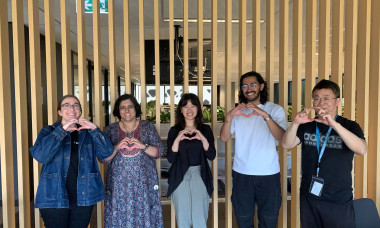The three stages of data migration explained for education providers
Data migration is a reality of our digitally transforming world. As education institutions like TAFEs procure new systems, consolidate and centralise data or just retire legacy systems, data needs to be moved from one system to the next in a way that safeguards continuity.
This is where data migration expertise comes to the fore for IT. Data migration is correctly recognised as a long, painstaking, detail-oriented process. This is because no two instances are the same; even within technology platforms there are variations that need to be understood.
We have a team of data migration specialists that have performed over 300 migration projects from a vast number and variety of systems. This includes TAFE and education, as well as other markets like apprenticeships, employment services, payroll and local government.
This brings a lot of knowledge about what works and what our technology customers want.
When seeking a technology provider, we find our customers seek out our expertise, but also a robust, best practice data migration methodology that helps reduce the risk of this key project element. We think it helps to consider data migration as a broadly three-stage process.
Here’s an overview of what to expect from a typical data migration project.
1. Data mapping
Most implementation project risk is tied to data mapping accuracy. Understanding legacy data is one of the essential elements in mitigating this risk. This is where data migration specialists with multiple years' experience in data management, transformation and migration do help!
Usually, TAFEs will encounter a version of the ‘Discover’ sessions we do for our Student Management System JR Plus. This is where we pair our domain knowledge with a TAFE’s team to understand legacy data before mapping that data into the JR Plus system.
This is where you’ll see the creation of a systems landscape asset that will surface all systems (applications) and supporting mechanisms (spreadsheets, manual data), which will help determine both the data contained and the value it holds for users.
This lays the foundation for accurate mapping.
Usually, a tech partner will require access to data sources, and where possible, access to legacy systems. This will help them comprehend how the data is stored and used. At ReadyTech, we create a data dictionary of the source data and a mapping of the transformation to JR Plus.
TAFEs should be aware data mapping isn’t the only project risk. How users rely on their existing tools to do their work is a big factor. This is why we and most other technology providers would work towards a future state by defining each legacy practice in one of four ways.
Remove: Remove entirely from the process – legacy tools that hold no residual value
Replace: Move activity into the new system and educate users in new processes
Interact: Non-API data portability (import/export routines)
Integrate: API integrations
2. Data cleansing
Data very often requires cleansing in a large migration project. Your technology partner’s team will support this process, for example around data health and acceptable rules and boundaries for cleansed data. There’s a number of factors usually considered in a data cleansing exercise.
These include:
- Dealing with duplicates
- Reference data – outside of reference
- Format of data
- Range of data
- Mandatory and/or missing data
- Conditional data rules
3. Data migration
Data migration is the culmination of the implementation project.
At ReadyTech, we use the Extract, Transform, Load (ETL) methodology of data migration. This is where we will define clean data so the migration tool being used can be programmed to interrogate source files and import compatible data whilst rejecting and reporting on errors.
We typically use the Pentaho Data Integration tool.
Data migration should be understood as an iterative process, rather than happening all at once. It involves checking for consistency from the source database against the business rules for the cleansed file, loading it into a staged database and finally, into the production database.
Map, clean, migrate, transform
At ReadyTech, our data migration experts will engage with a new onboarding customer at the beginning of the project and work closely alongside their technology project team throughout.
We always recommend the data migration process starts early in the implementation.
This is so that data can be migrated within an iterative development and testing process, because the code and data are so closely interrelated in terms of quality assurance.
With these steps in mind, there’s every reason for even complex TAFEs to be confident in data migration. And there’s a promise waiting after all that mapping, cleansing and migrating.
Transformation.
It’s true data migration to a new system can change the game for a TAFE provider. This makes a dedicated focus on the details of data migration well worth the time and the trouble.
Find out more about how ReadyTech supports TAFEs with next generation student management technology. Click here.






